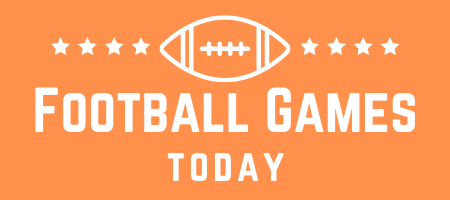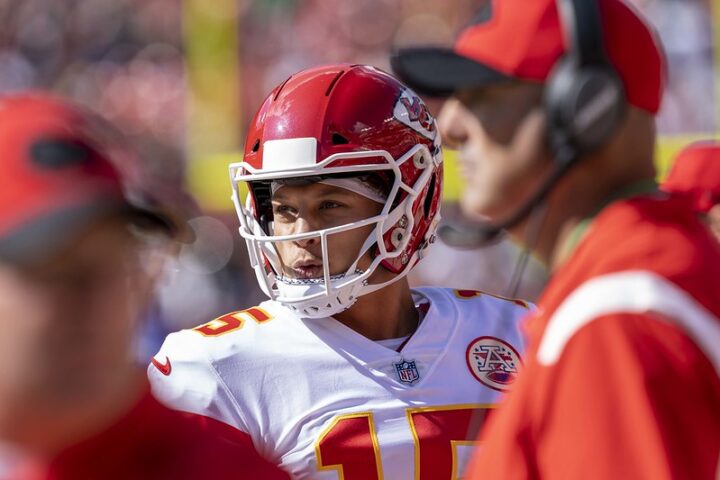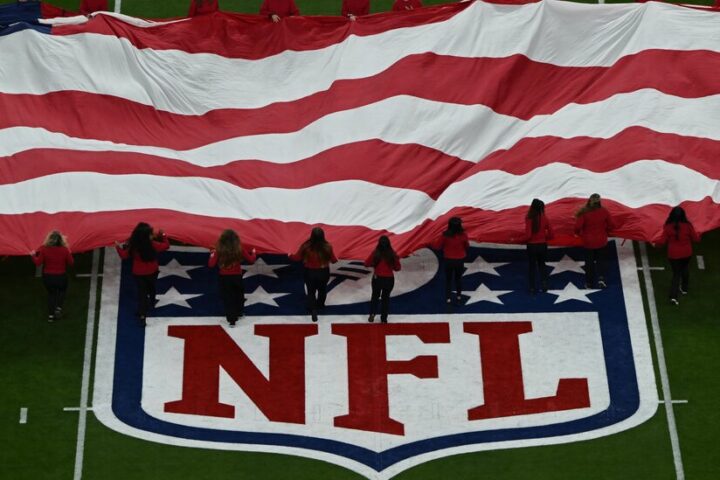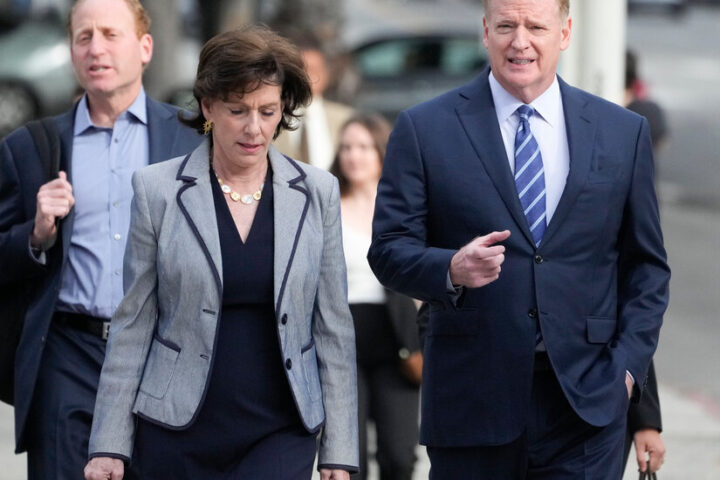The Chicago Bears‘ roster looks quite a bit different than it did when general manager Ryan Poles and head coach Matt Eberflus took over before the 2022 offseason. Through draft selections, free agent pickups, and trades, Poles and Eberflus have revamped Chicago’s personnel.
The job isn’t done — the Bears still need more impact players and aren’t yet considered a surefire contender. But let’s run through how Chicago’s depth chart was built and assess where the club’s key contributors came from.
How The Chicago Bears Were Built Through the Draft
Although Justin Fields was drafted by the Bears’ current regime, Poles and Eberflus are hoping the former Ohio State star will develop the passing acumen that — combined with his already extant rushing ability — could make him a star. Former GM Ryan Pace traded up to select Fields in 2021, sending a 2022 first-rounder as part of a package to move from No. 20 to No. 11.
Chicago chose tight end Cole Kmet 43rd overall in the 2020 draft, but most of the other original Bears skill-position picks still remaining on the roster were later-round selections. Running backs Khalil Herbert and Roschon Johnson were both Day 3 picks, as were wide receivers Darnell Mooney and Tyler Scott. Velus Jones Jr. was a Round 3 choice in 2022, but he’s already been bumped down Chicago’s depth chart.
Offensive lineman Cody Whitehair is the longest-tenured Bear, having been drafted in 2016. At tackle, Chicago invested in first-rounder Darnell Wright in 2023 after finding a fifth-round gem (Braxton Jones) in 2022. Teven Jenkins, a second-round pick in 2021, may have found a home at guard after struggling at tackle during his rookie campaign.
MORE: Best NFL Offenses | Best NFL Defenses
While the Bears haven’t invested significant draft assets at defensive end, Poles began to rework the interior of Chicago’s defensive line in 2022. The Bears drafted Gervon Dexter and Zacch Pickens on Day 2 before finding Travis Bell on Day 3, giving the team three big bodies to clog up rushing lanes.
Chicago has more draft capital invested in its secondary than anywhere else on its roster. Four of the Bears’ projected nickel starters — Jaylon Johnson, Kyler Gordon, Tyrique Stevenson, and Jaquan Brisker — were chosen in Round 2, while veteran Eddie Jackson and backup Kindle Vildor were fourth and fifth-round selections, respectively.
- QB: Justin Fields
- RB: Khalil Herbert, Roschon Johnson
- WR: Darnell Mooney, Tyler Scott, Velus Jones Jr.
- TE: Cole Kmet
- OT: Braxton Jones, Darnell Wright, Larry Borom
- G: Teven Jenkins
- C: Cody Whitehair, Doug Kramer
- EDGE: Trevis Gipson, Dominique Robinson
- DT: Gervon Dexter, Zacch Pickens, Travis Bell
- LB: Noah Sewell
- CB: Jaylon Johnson, Kyler Gordon, Tyrique Stevenson, Kindle Vildor, Terell Smith
- S: Eddie Jackson, Jaquan Brisker, Elijah Hicks, Kendall Williamson
- ST: Trenton Gill
How The Chicago Bears Were Built Through Free Agency
While the Bears were not overly active in the free agent market in 2022, Poles identified several target areas for improvement this past offseason.
Chicago signed two starting linebackers this year, adding Tremaine Edmunds for $18 million per year and T.J. Edwards for $6.5 million annually. Given his salary, the Bears expect Edmunds to be one of the best linebackers in the NFL in 2023.
The Bears haven’t been able to add many impact defensive linemen through free agency, but they’ve used the open market to find role players. Veterans like DeMarcus Walker, Justin Jones, and Andrew Billings will provide competency up front, but Chicago still needs more playmakers. Elite edge players don’t typically hit free agency, so the Bears may have to end up using more draft capital to fill voids at that position.

Running back D’Onta Foreman signed for one year, $2 million, after rushing for nearly 1,000 yards with the Panthers in 2022. He doesn’t profile as a long-term asset, but Foreman will compete with Herbert and Johnson for carries next season. Tight end Robert Tonyan is the only other Bears free agent addition who projects to have a skill-position role on offense, but he’ll be behind Kmet for opportunities.
After spending four years with the Titans, guard Nate Davis will slot in on the right side for the Bears after inking a three-year, $30 million deal. Lucas Patrick, who signed a two-year pact with Chicago in 2022, was supposed to be the team’s starting center last year. But injuries have now turned him into an overqualified reserve.
- QB: P.J. Walker, Nathan Peterman
- RB: D’Onta Foreman, Travis Homer
- FB: Khari Blasingame
- WR: Dante Pettis, Equanimeous St. Brown
- TE: Robert Tonyan
- OT: Alex Leatherwood (waivers)
- G: Nate Davis, Lucas Patrick
- EDGE: DeMarcus Walker, Rasheem Green
- DT: Justin Jones, Andrew Billings
- LB: Tremaine Edmunds, T.J. Edwards, Jack Sanborn (UDFA), Dylan Cole
- CB: Josh Blackwell (waivers)
- ST: Cairo Santos
How The Chicago Bears Were Built Through Trades
The Bears have one crystal-clear goal in mind for the 2023 season: Determine if Fields can be their long-term starting quarterback.
Chicago has worked to augment Fields’ offensive line, and they’ve also tried to give him more weapons. Two of Fields’ top three receivers were acquired via trade, as the Bears picked up DJ Moore from the Panthers and Chase Claypool from the Steelers.
MORE: Chicago Bears 2023 NFL Schedule
The Claypool acquisition came first, as Chicago worked out a deal for the 24-year-old at the 2022 trade deadline. The Bears sent their second-round pick to Pittsburgh for Claypool, who had posted nearly identical seasons in 2020 and 2021 except for a difference in touchdowns (nine vs. two).
That second-round selection ended up being the 32nd overall pick in the 2023 draft, while Claypool managed just 14 receptions for 140 scoreless yards upon coming to the Windy City. The trade looks like a loss for the Bears, but Claypool still has one more season to deliver before becoming a free agent in 2024.
Moore, meanwhile, came to Chicago when the Bears traded the No. 1 overall pick in the 2023 NFL Draft to the Panthers. In that deal, Carolina sent Moore, pick Nos. 9 and 61, a 2024 first-round pick, and a 2025 second-round pick in exchange for the top choice.
Moore just turned 26 years old and remained relatively consistent with the Panthers despite working with subpar QB play for much of his tenure. His inclusion in the Bears trade was reportedly “non-negotiable,” and Chicago hopes he’ll become Fields’ WR1 for the foreseeable future.




